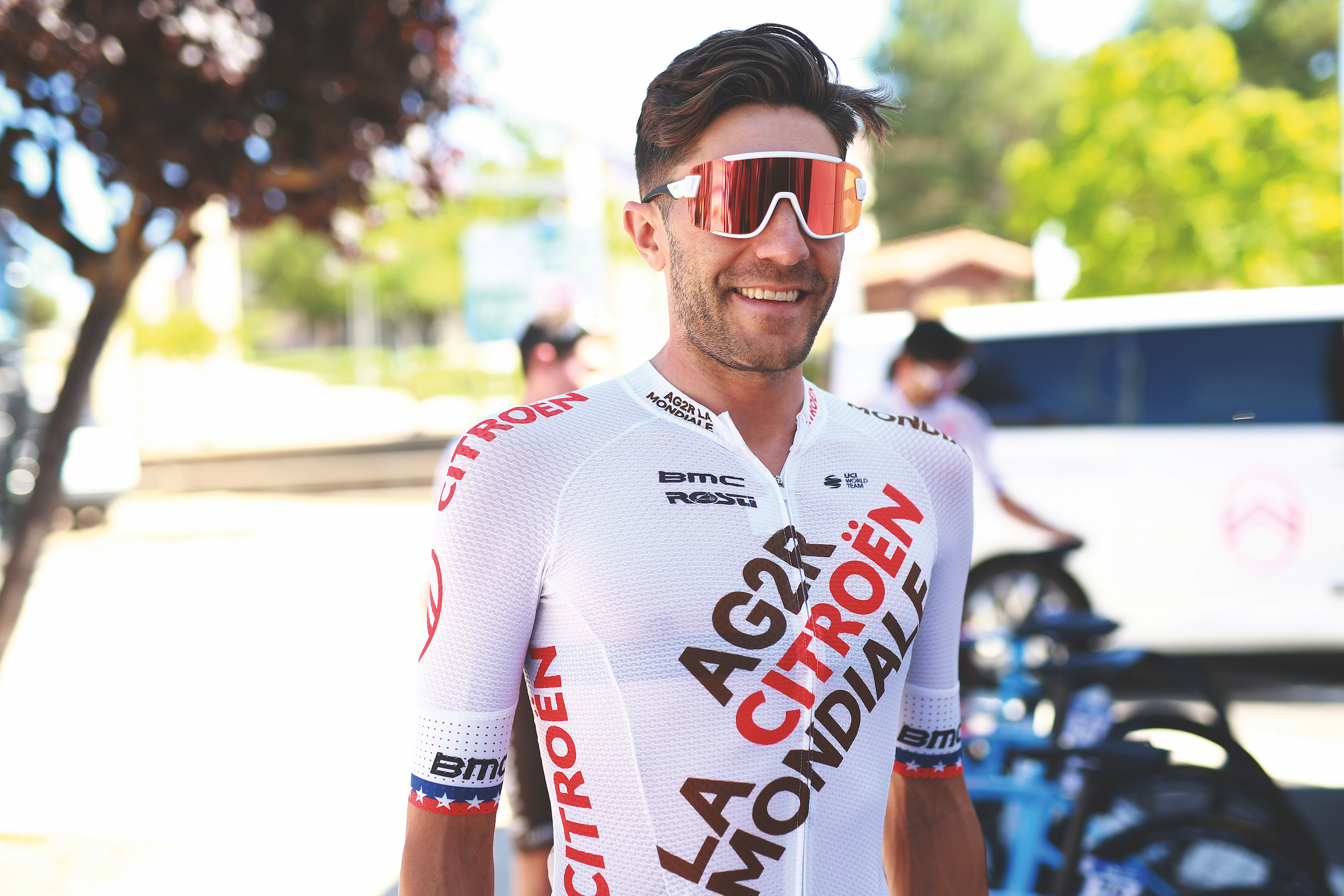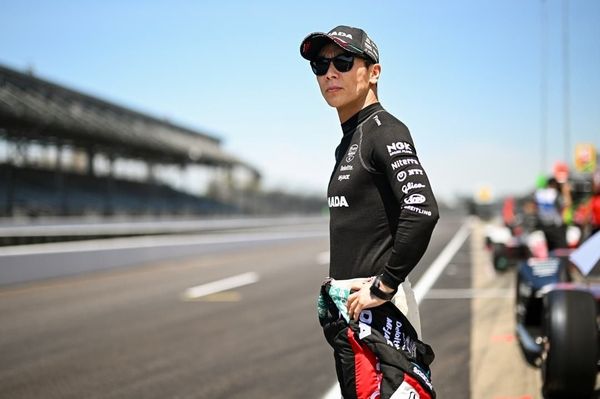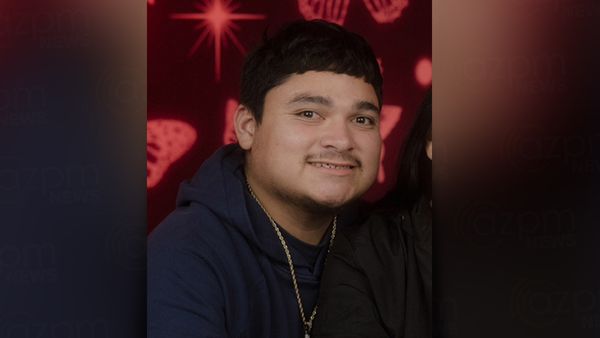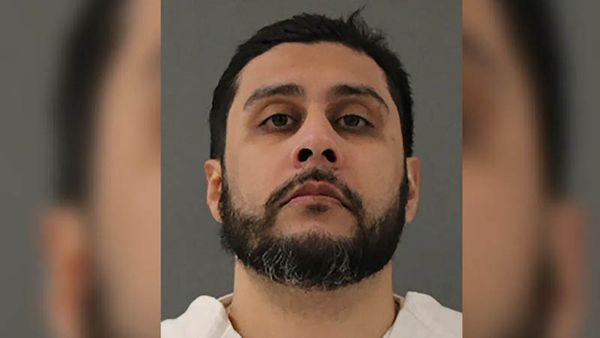
Want to know how the best riders in the world train? For each article in this long-running MY WEEK IN TRAINING series from Cycling Weekly's print edition, we sit down with a pro rider who talks us through a recent week of training in granular detail. This time it's the turn of Larry Warbasse...
Mountain domestique and a regular figure in breakaways, Larry Warbasse began his WorldTour career at BMC Racing back in 2012. Since then, he has raced for IAM Cycling, Aqua Blue, and for Ag2r-Citroën since 2019. His second Grand Tour of the year, the Vuelta a España, was the ninth Grand Tour of his career. He also rode this year’s Giro d’Italia – making this his busiest season since 2014, with close to 90 race days. We caught up with Warbasse by phone on the Vuelta’s first rest day to talk through his last altitude training camp before the season’s final Grand Tour.
What was the main purpose of this training week?
This was my last full week of focused preparation for the Vuelta, because after it I raced the Tour of Poland, the World Championships and the Vuelta a Burgos. The idea behind the camp was to get a good amount of climbing and training volume in, and I’ve had some really good results in the past after altitude camps. Envalira, at the top of Andorra, is a really good place to focus.
After the Vuelta, you’ll have done 85 race days this season. How are you feeling?
That’s a lot, isn’t it? It was never really the plan, but I have always been available when guys have been sick or injured. I feel a little bit tired, but that’s mostly because the first half of the Vuelta has been really hard. The hardest thing is all the time away from home – being on the road a lot is really tough.
How do you train to get into breakaways?
Motor-pacing can be quite good for race simulation. Repeated sprint efforts in training are also good, and you can train long breakaway efforts by riding tempo on climbs or on the flats, while simultaneously keeping as aero as possible; it’s all trainable. But, honestly, nothing can truly imitate being in a race. Take this year’s Vuelta: on some of the stages, the number of accelerations has been just unreal. The best training is racing.
Rider profile: Larry Warbasse
Age: 33
Height: 6ft
FTP: 400W
Raised: Dearborn, Michigan, USA
Lives: Nice, France
Rides for: Ag2r-Citroën
Best results: 1st – US national road race champs (2017); 7th GC – Tour of Poland (2016); 1st – Stage 4, Tour de Suisse (2017)
Instagram: @warbasse

What’s been the biggest training development in your career?
Not so long ago, we were under the impression that you didn’t need to eat much on the bike, only when you were hungry. Now we are smashing nutrition.
Do French teams have different training habits?
In the Anglo training world, we work off FTP, but in France they use maximal aerobic power, or puissance aérobie maximale, shortened to PAM [basically max five-minute power]. They do all of their efforts as a percentage of PAM. They definitely prioritise volume over recovery, to the extent that some Anglo trainers would view it as not getting enough recovery. In saying all this, although I’m in a French system, my team coach [Stephen Barrett] is Irish so I’ve not really made the crossover!
The week: Facts and figures
When: 10-16 July, 2023
Where: Envalira, Andorra
Training for: Vuelta a España
Total riding: 23hr 55min
Z3+ effort: 1hr 50min
Monday: Cafe spin – 1hr 20min
This was my fourth day at altitude and I had just completed a three-day acclimatisation block. On these camps, I do two days hard, one day easy, and today’s ride was most definitely easy. I cycled 20 minutes down the mountain for a coffee, and turned around. I gave myself a heart rate cap of 110bpm to make sure that I really was just spinning. My average power was 163 watts.
Tuesday: VO2max efforts – 4hr
I did VO2-max-focused threshold efforts all day on the Alto de la Rabassa climb. I started off with three times five minutes at 360-370 watts, with a one-minute rest in between, to open the system a bit. My next efforts were 10 times one minute on, one minute off at 12-minute power pace, averaging between 440 and 460 watts. I then did three sets of five times one minute, with three minutes in between sets. I think it’s good to do efforts on both climbs and flat roads to fully prepare you for racing, but I definitely prefer to do them on climbs.
Wednesday: Endurance ride – 5hr
During my two-day blocks at altitude, one day is intensity, the other day is endurance. For these endurance rides, like my rest day spins, I give myself a heart rate limit, and the maximum I permit is 125-130bpm. I find that on the climbs I average around 125bpm. My average watts for the day was just under 200.
Thursday: Coffee shop spin – 1hr 30min
The same as Monday: down the mountain, coffee stop, and then back up, with the same cap on my heart rate. The hotel at the top of Envalira sits at 2,409m above sea level, and during this week there were around 25 riders staying there. There was an Ineos Grenadiers training camp, but the rest of us were alone or in small team groups. They really cater for cyclists, with a relatively healthy buffet that serves lunch until 5pm.
Friday: Double threshold day – 4hr 15m
Occasionally I split the day into morning and afternoon sessions, as you can get more efforts done without fatiguing as much. There’s also the metabolic benefit of having a rest in between two workouts. In the morning, I did eight times five minutes sub-threshold progressive efforts starting at 300 and topping out at 380 watts; there was a one minute rest in between. In the afternoon, I did 10 times three-minute efforts approaching threshold, starting at 370 watts and working up to 400 watts for the last one.
Saturday: Endurance ride – 6hr
For this big endurance ride, in which I went north into France, a big loop racking up 3,800m of elevation gain, I capped my maximum watts at 300 but, unlike the previous endurance ride, there was no heart rate limit. On these solo rides, I bring bagged electrolyte and carbohydrate drink mixes with me, and stop off at water fountains. I also can’t resist popping into a bakery and buying an almond croissant.
Sunday: Easy day – 1hr 45min
For me it’s important to keep riding on an easy day when I’m at an altitude camp because I want to get as much out of being here as possible, and riding at this low intensity keeps things ticking over.
This full version of this article was published in the 14 September 2023 print edition of Cycling Weekly magazine. Subscribe online and get the magazine delivered to your door every week.







